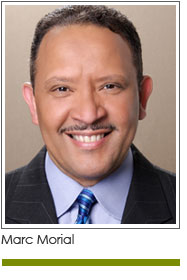 “Recommendation: Law enforcement agencies should strive to create a workforce that contains a broad range of diversity including race, gender, language, life experience, and cultural background to improve understanding and effectiveness in dealing with all communities. During these trying times when African American communities and law enforcement are grappling with a deep disconnect due to a lack of trust, communication, and implicit bias, the National Urban League welcomes every effective tool available to heal our communities.” – The President’s Task Force on 21st Century Policing
“Recommendation: Law enforcement agencies should strive to create a workforce that contains a broad range of diversity including race, gender, language, life experience, and cultural background to improve understanding and effectiveness in dealing with all communities. During these trying times when African American communities and law enforcement are grappling with a deep disconnect due to a lack of trust, communication, and implicit bias, the National Urban League welcomes every effective tool available to heal our communities.” – The President’s Task Force on 21st Century Policing
The interagency report released this week by U. S. Department of Justice and the U.S. Equal Employment Opportunity Commission, “Advancing Diversity in Law Enforcement” is a welcome tool that examines those key barriers as well as promising practices in the recruitment, hiring and retention of law enforcement candidates that can advance much-needed diversity in our law enforcement agencies.
Developed with support from the Center for Policing Equity, the report aims to provide law enforcement agencies, especially small and mid-size agencies, with a resource to enhance the diversity of their workforce by highlighting specific strategies and efforts in place around the country, such as:
Ensuring that the agency’s organizational culture is guided by community policing (a strategy of policing that focuses on police building ties and working closely with community members); procedural justice (the idea of fairness in the processes that resolve disputes) and cultural inclusivity (welcoming and including all people).
Engaging stakeholders – both from within and outside the law enforcement agency – to help create a workforce that reflects the diversity of the community.
Being willing to re-evaluate employment criteria, standards, and benchmarks to ensure that they are tailored to the skills needed to perform job functions, and consequently attract, select, and retain the most qualified and desirable sworn officers.
The report builds on the recommendations of the President’s Task Force on 21st Century Policing, to which I provided testimony on our 10-Point Plan for Police Reform and Accountability. It emphasizes that “while greater workforce diversity alone cannot ensure fair and effective policing, a significant – and growing – body of evidence suggests that diversity can make policing more effective, more safe and more just.”
Police departments face challenges when it comes to the issue of diversity in recruiting. In her own testimony to the President’s Task Force, NAACP Legal Defense Fund President Sherrilyn Ifill, said of youth in poor communities, “By the time you are 17, you have been stopped and frisked a dozen times. That does not make that 17-year-old want to become a police officer . . . . The challenge is to transform the idea of policing in communities among young people into something they see as honorable. They have to see people at local events, as the person who lives across the street, not someone who comes in and knows nothing about my community.”
This week’s report acknowledges those barriers, noting that “Strained relations and a lack of trust of law enforcement may deter individuals from underrepresented communities from applying to be officers,” and “The reputation or operational practices of law enforcement agencies may dissuade applicants from underrepresented communities from pursuing a career in law enforcement.”
However, the report found that a diverse police force that represents the population it serves eases the tensions between the police and African-American communities, likely because:
Increased representation of racial minorities increases the legitimacy of the law enforcement agency among minority residents;
A greater presence of officers who are racial minorities not only is likely to change the public’s perception of the agency, but these officers are also likely to be more knowledgeable and empathetic about the concerns and culture of minority communities;
A higher number of minority officers within an agency provides opportunities for greater contact and interactions between white and minority officers, which can shape attitudes and reduce negative opinions or stereotypes about minority communities; and
The presence of minority officers is likely to introduce different perspectives into an agency, and those perspectives can undermine an unnecessarily rigid response to certain events or perceived threats.
The National Urban League strongly urges law enforcement agencies across the country to not only read, but to also adopt or adapt those successful diversity-building efforts that have already been implemented by selected law enforcement agencies outlined in this report.
Marc Morial is the president and CEO of the National Urban League.











